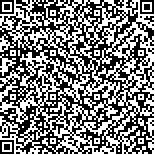孙甜,巩尊科,周婷,等.急性期介入低频重复经颅磁刺激对缺血性脑卒中患者上肢运动功能的影响[J].中华物理医学与康复杂志,2024,46(3):216-220
扫码阅读全文

|
| 急性期介入低频重复经颅磁刺激对缺血性脑卒中患者上肢运动功能的影响 |
|
| |
| DOI:10.3760/cma.j.issn.0254-1424.2024.03.005 |
| 中文关键词: 重复经颅磁刺激 急性期 缺血性脑卒中 上肢运动功能 |
| 英文关键词: Transcranial magnetic stimulation Acute stroke Cerebral ischemic stroke Upper limb motor function |
| 基金项目:江苏省卫生健康委科研项目(K2019012) |
|
| 摘要点击次数: 3572 |
| 全文下载次数: 4139 |
| 中文摘要: |
| 目的 探讨急性期介入低频重复经颅磁刺激(rTMS)对缺血性脑卒中患者上肢运动功能的影响。 方法 选取急性期缺血性脑卒中患者82例,按照随机数字表法将其分为对照组和试验组,每组41例,研究过程中每组均脱落1例,最终对照组和试验组各纳入40例。2组患者均给予常规康复治疗,试验组予以低频rTMS治疗,对照组予以rTMS假刺激治疗。治疗前、治疗4周后,采用Fugl-Meyer量表(FMA)上肢部分、Wolf运动功能评价量表(WMFT)、改良Barthel指数(MBI)、运动诱发电位(MEP)潜伏期和波幅评价2组患者的上肢运动功能。 结果 治疗前,2组患者FMA评分、WMFT评分、MBI评分、MEP波幅和潜伏期比较,差异均无统计学意义(P>0.05)。治疗4周后,2组患者的FMA、WMFT、MBI评分和MEP波幅均较组内治疗前明显改善(P<0.05),且试验组治疗4周后的FMA[(39.20±7.36)分]、WMFT[(54.43±9.28)分]、MBI[(62.18±9.53)分]、MEP波幅[(0.74±0.08)mV]改善较对照组显著(P<0.05)。 结论 急性期介入低频rTMS可改善缺血性脑卒中患者的上肢运动功能,提高日常生活活动能力。 |
| 英文摘要: |
| Objective To explore the utility of applying low frequency transcranial magnetic stimulation (rTMS) in the acute stage of ischemic stroke in terms of improving upper limb motor function. Methods Eighty ischemic stroke survivors in the acute stage were randomly divided into a control group and an experimental group, with 40 in each. In addition to routine rehabilitation, the experimental group was given low frequency rTMS, while the control group was provided with sham rTMS. Before and after 4-weeks of treatment, upper limb motor function was evaluated using the Fugl-Meyer rating scale (FMA), Wolf motor function tests (WMFTs), the modified Barthel index (MBI) and in terms of motor evoked potential (MEP) latency and amplitude. Results There were no significant differences between the two groups before the treatment. Afterward, however, the average FMA, WMFT, MBI scores had improved significantly more in the experimental group, on average, as had the average MEP amplitude. Conclusion Low frequency rTMS in the acute phase of ischemic stroke can improve upper limb motor function and ability in the activities of daily living. |
|
查看全文
查看/发表评论 下载PDF阅读器 |
| 关闭 |